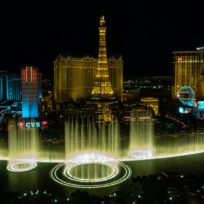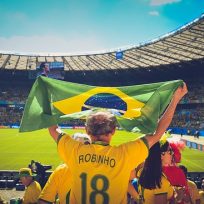
First flag of the Brazilian Republic (Wikipedia)
In my last post about Brazil for the World Cup for Kids series I asked people what they thought Brazil was famous for, hoping to find something different to write about. Well, Amanda Van Mulligan, from Expat Life with Double Buggy, left a comment which got me thinking. She said:
After football I definitely think of carnival. And just thinking about the word Brazil makes yellow and green float into my head – and I don’t generally automatically associate the colours of a country’s flag when I say a country’s name but it happens with Brazil!
I am not going to write about carnival, because it has no doubt been done to death. The colours that represent Brazil, however, seems much more interesting.

Republic of Brazil (Wikipedia)
Flag of the Brazilian Republic
If you ask most Brazilians what their colours represent and they’ll tell you that the green represents nature, with the Amazon, Pantanal and other wildlife, the yellow represents natural wealth in the form of gold and other minerals, and the blues represent the sky as it is seen on the flag.
After a tiny bit of research (thanks Wikipedia) it seems that only one of these ideas is definitely true.
On the flag we can see a blue circle with stars on which are in the position they would have been ay 8:30 am, 15th November 1889, as seen from an imagined observer directly above Rio de Janeiro. This date was the day that Brazil officially became a Republic. There are 26 stars that represent the number of states in Brazil, plus the Federal District, which is home to the capital, Brasilia.
Flag of the Brazilian Empire

Flag of Empire of Brazil (Photo credit: Wikipedia)
The green and yellow of Brazil comes from the time of the Brazilian Empire, which immediately pre-dated the Republic. The green represented the House of Pedro I and the yellow was that of the Empress Consort, Maria Leopoldina of Austrian. Now, it is entirely possible that Pedro I chose green to represent his family because of the natural beauty of his realm, and that his wife was more interested in the gold that came along with it, but I haven’t been able to find one reference to this.
For a few months after the Republic came into being, and before they settled on the current flag, Brazil had another flag which also featured green and yellow. It was soon rejected, though, because of a striking resemblance to the flag of another country, and because the authorities wanted to show some sort of consistency during the time of moving from a monarchy to a republic.
Fun with flags, anyone?
This blog piece is a part of the Multicultural Kid Blogs series on World Cup for Kids. If you would like to follow the World Cup from the point of view of kids around the world then please go and check out the site. There are bloggers from all of the competing countries as well as articles about Brasil and how to get kids interested in sport.







